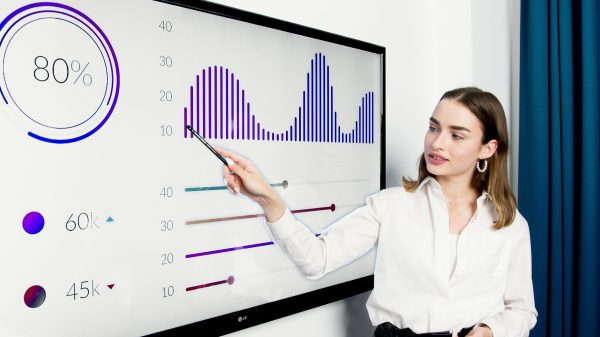In mid-August, the European Commission (EC) transferred to Spain the first disbursement of the Community recovery fund, an advance of 9,000 million euros (13% of the amount allocated to Spain), which will be earmarked, among other things, for projects to support the digitalisation of SMEs and the self-employed.
Digitising SMEs is not a luxury; the country’s economic recovery depends on the optimisation of its economic muscle. The data is indisputable: SMEs account for 98.99% of all companies in the Spanish economic fabric and for 49.5% of employment.
The government has launched the 2121-2025 Plan for the Digitalisation of SMEs which allocates 4,459 million euros towards digitalisation. The goal is to reach up to 1.5 million SMEs, which represents half of all SMEs in Spain.
However, 97% of SMEs in Spain do not consider digitalisation to be a priority and fewer than 20% have a digital plan, according to the executive chairman of Telefónica, José María Álvarez-Pallete. For SMEs, going digital would accelerate 1.8% of GDP growth by 2025.
But how does an SME go digital? What are the steps to follow? Which technological solutions are the best?
According to the Guide for the Digital Transformation of SMEs prepared by DigitalES, the technology sector employers’ association, the digital transformation process must be properly planned and designed, choosing the most appropriate technologies in each case.
Three phases in the process
The guide distinguishes three phases: the analysis phase, in which the critical business processes and weak points must be identified and the degree of digital maturity of the SME must be determined in order to clearly understand what is to be improved and what impact the transformation will have on the business; the design phase, in which the stages for the digital transformation and the technological solutions are established; and the execution and continuous improvement phase, in which the devised plan will be implemented, with clear indicators that allow compliance with the plan to be assessed.
Among the technologies that can help SMEs in their transformation, DigitalES reviews some of the main digital solutions, the usefulness of which will depend on each of the company’s size, degree of digital maturity, sector and investment capacity:
- Fixed and mobile broadband connectivity: Fundamental to ensure a quality connection between customers, suppliers, public administrations and with business applications. The possibilities range from fixed telephony, fibre-based broadband, virtual private networks or VPNs to mobile solutions (3G/4G and the promising 5G).
- Digital workplaces: As we have seen during the pandemic, telework makes it possible for companies to stay in business with solutions that allow them to transform the workplace and adapt it to mobility when necessary and to the digital needs of the business.
- Digital management applications (ERP) and office automation: They automate processes such as electronic invoicing and allow you to see the business situation in real time so that it is possible to react more quickly to any type of situation.
- Multi-channel customer management platform (CRM): Such tools offer 360-degree management of sales, marketing and customer service, as well as providing valuable information on the customer’s needs and wants.
- Collaboration tools:They allow workers to communicate and work together regardless of their physical location.
- Cloud backup and virus and malware protection applications: Having backups allows for the recovery of vital business data in the event of an emergency. These backups can be stored securely and reliably in the cloud. Anti-virus software is of great importance in order to detect, protect and remove malicious software aimed at stealing money, personal information or system resources.
- Online shop and website solutions: Technology platforms for selling products and services over the internet (online shops) have been a lifeline for many SMEs during the pandemic.
- IoT solutions: The Internet of Things opens up a world of possibilities for small businesses as well. Connecting the digital and physical world allows for things such as fleet management, video monitoring and video surveillance, so that all this information can be processed and analysed and operational costs can be reduced or services improved.
- Digital marketing tools: A large volume of information can be dealt with thanks to these tools, thereby speeding up processes and improving results. Options range from email marketing tools, marketing automation, content marketing, content creation and editing, SEO and SEM, to social media benchmarking and influence measurement.
- Business Intelligence services: They range from intelligent analytics technologies to big data platforms. While big data focuses on the collection, storage and processing of data, business intelligence focuses on the processes of analysing this data to convert it into information and make the right business decisions.
- Process automation (AI) solutions, machine learning, deep learning: These systems allow for the creation of intelligent systems that improve autonomously by analysing the data that gets incorporated into the system, learning to predict behaviour or to make the right decisions.
- Process efficiency: SMEs have a multitude of solutions at their disposal to optimise processes such as stock control, business energy efficiency, supply chain management, waste management and route management.








